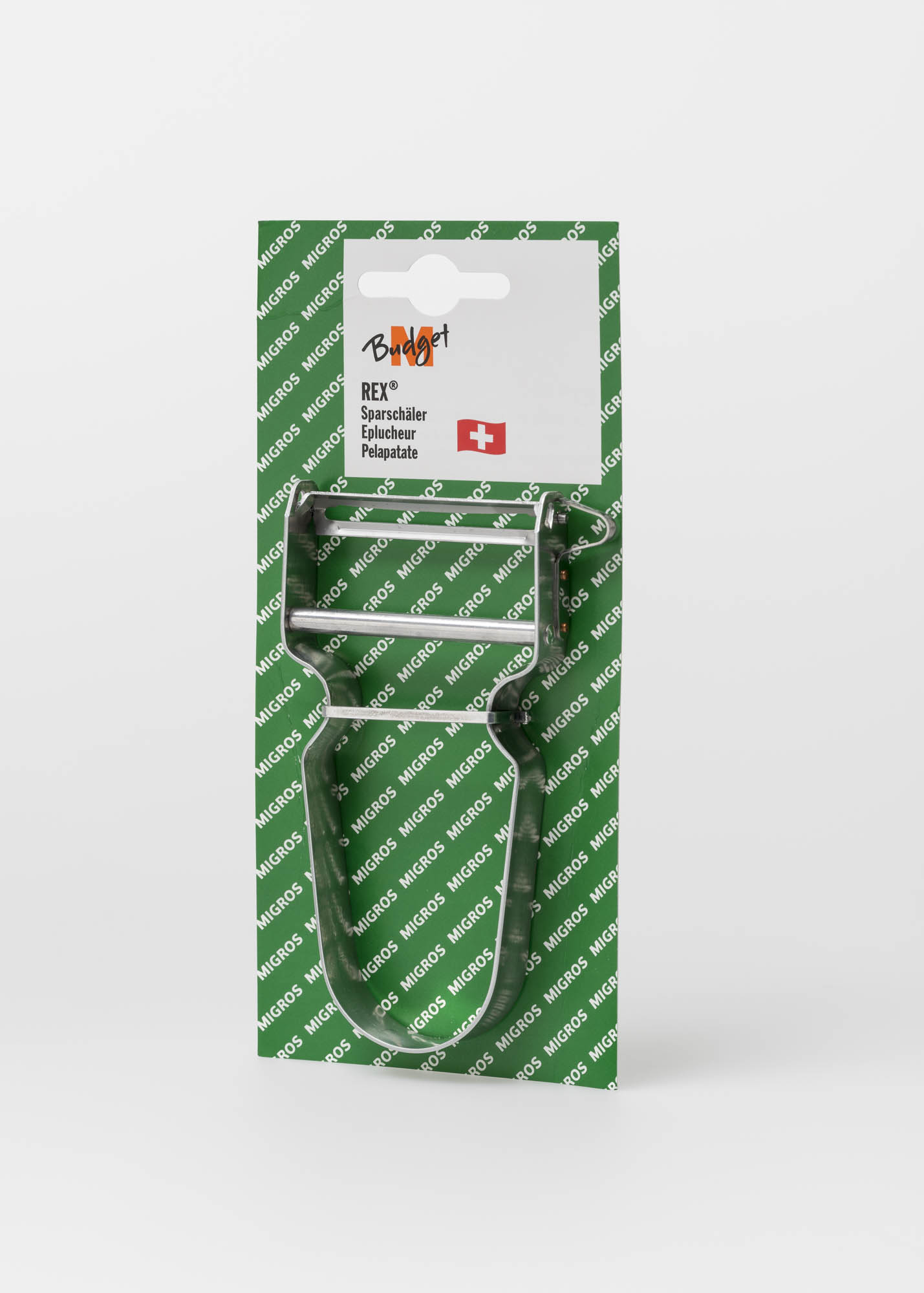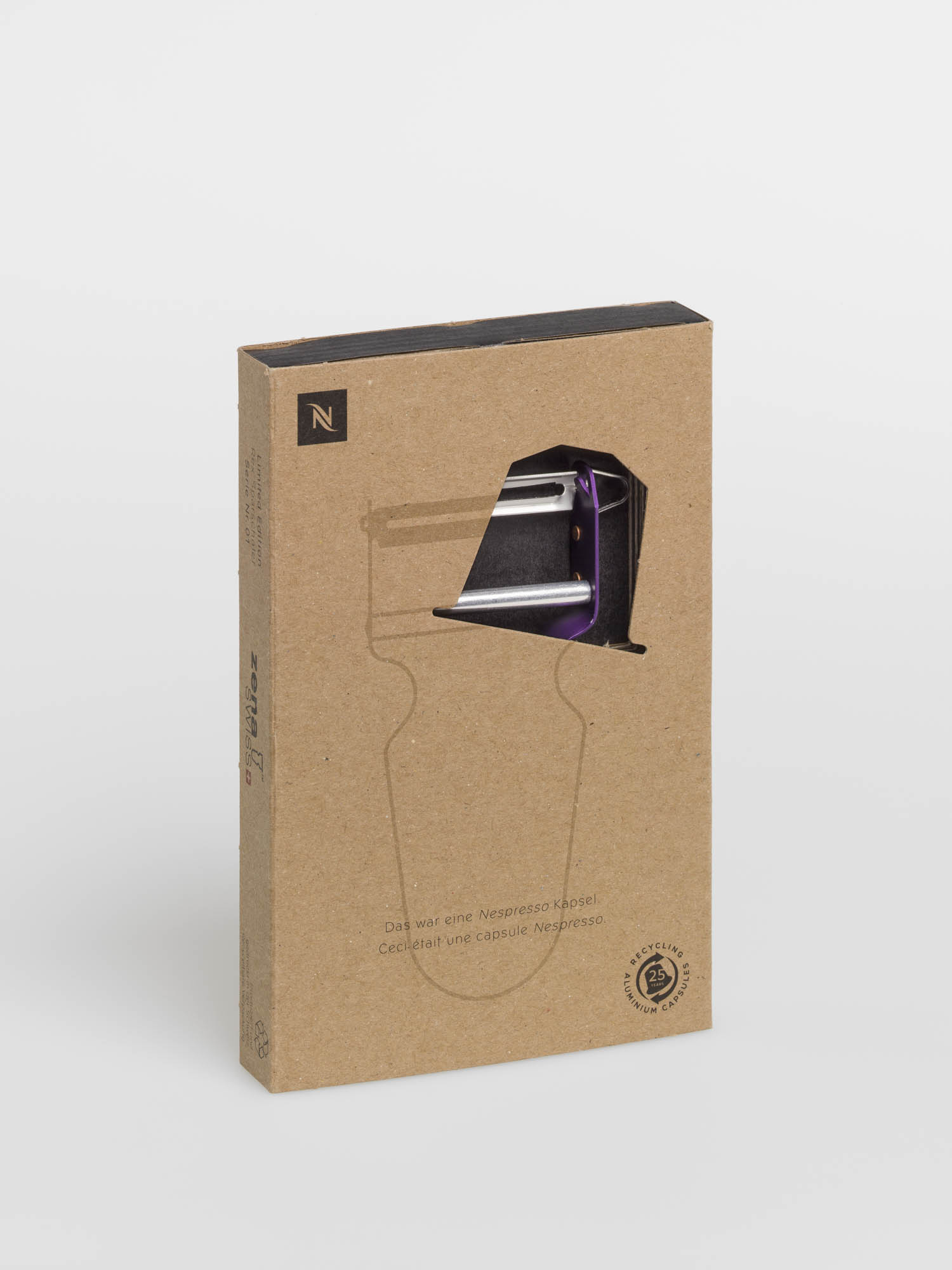8031 Zurich
8031 Zurich
8008 Zürich
With its simple material-saving design, efficiency in use, ergonomic shape, and low price, the Rex economy peeler is the epitome of a democratic Swiss industrial product.
Alfred Neweczerzal (1899–1959), a Davos-born descendant of Czech immigrants, founded the company Zena AG with the invention of his economy peeler. As early as 1931 he had purchased a punching machine and set up a workshop in a house in Zürich Wiedikon. Neweczerzal was a market vendor and an innovative tinkerer who developed numerous kitchen tools before applying for a German patent in 1935 for a vegetable peeler with adjustable blade. In 1947 he had the invention he called the “Rex” put under worldwide design protection as Mod. Int. 11002. The Rex peeler has been in production virtually unchanged since that year. For optimal stability, its grip is made of a double-curved aluminum strip, and its movable blade head and the potato eye remover on the side of burnished steel. The same machines are still being used in today’s factory in Affoltern am Albis. Approximately one million peelers are produced each year, and by 2009 a total of seventy million Rex peelers had been sold, almost of a third of these in Switzerland. Their popularity can be attributed mainly to their efficiency and ease of handling. Thanks to its movable horizontal blade, the Rex makes quick work of bumpy vegetable and fruit surfaces and can even be used to make shavings from hard cheese or chocolate. A spacer runs parallel to the blade to keep the peelings thin and thus ensure optimal economy. Even the price of the democratic Swiss product has hardly changed since 1947 when it cost 1.30 Swiss francs; today it costs 1.95. (Renate Menzi)
Entwicklung: Alfred Neweczerzal
Herstellung: Zena AG, Affoltern am Albis, CH
Material/Technik: Aluminium, rostfreier Stahl
11 x 6,5 x 1,3 cm
Eigentum: Museum für Gestaltung Zürich / ZHdK
Gemüseschäler, Rex, 1936, Entwicklung: Alfred Neweczerzal, Herstellung: Zena AG, Affoltern am Albis, CH
Abbildung: Museum für Gestaltung Zürich / ZHdK
Gemüseschäler, Rex, 1936, Produktion: Migros-Genossenschafts-Bund, Zürich, CH
Abbildung: Museum für Gestaltung Zürich / ZHdK
Gemüseschäler, Nespresso Second Life – Limited Edition Rex Sparschäler Serie Nr. 01, 2016, Produktion: Nespresso S.A., Pully, CH
Abbildung: Museum für Gestaltung Zürich / ZHdK
Because its manufacture requires a large amount of electricity, aluminum is considered a “Swiss raw material.” In 1888, Europe’s first hydro-powered aluminum plant was put into operation in Neuhausen. The lightweight metal became cheaper and, after being adopted by the aircraft industry, made inroads into Swiss households. During World War II, aluminum replaced then-scarce steel and experienced a boom in field kitchens and elsewhere.








